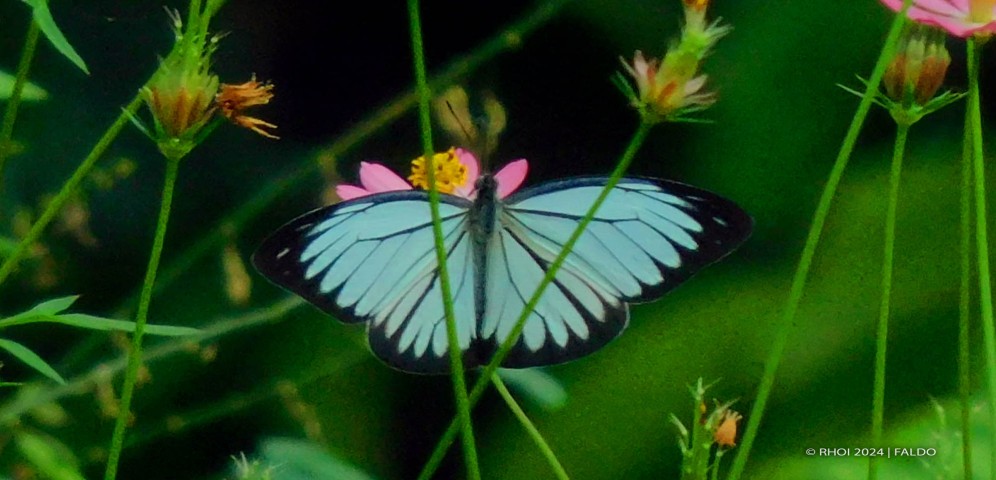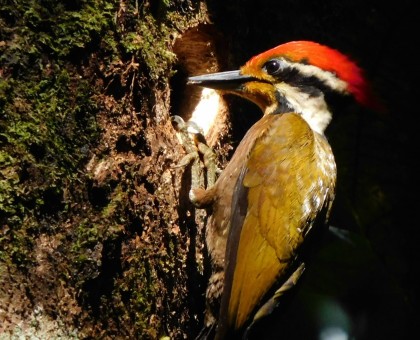18 Mar, 2024
KEMBARA AND ITS ENCHANTING BLUE WINGS
BIODIVERSITY
One of the butterflies found near Camp Nles Mamse recently immediately caught the attention of our Post-Release Monitoring (PRM) team. Our team spotted the butterfly after it touched down on a kinikir flower (Cosmos caudatus). The blue-patterned butterfly is in the Pieridae family and is known as the common wanderer (Pareronia valeria) or kembara in Indonesian.
This species of butterfly is what we call sexually dichromatic, meaning that the males and females come in different colours. The male kembara has striking blue wings, while the females have wings that are much lighter in colour and sometimes have bright yellow features as well. Both have black-lined markings and white patches around the edge of their wings, which span between 60 to 80 mm.
The kembara is found in tropical areas from India all the way through Southeast Asia, including the countries of Malaysia, Singapore, and Indonesia. In Borneo specifically, there is a unique subspecies of kembara called the Pareronia valeria lutescens.
When it comes to conservation, the status of kembara has not been recorded and evaluated by the International Union for Conservation of Nature (IUCN). What we do know is that the kembara plays an important role as an indicator of environmental quality. Moreover, climate change continues to have negative impacts on this butterfly population as it causes disruptions in the flowering seasons.
Text by: Hana Iffatalya, Japan Environmental Education Forum (JEFF) Program Internship Student Batch 6, Sompo Environmental Foundation




